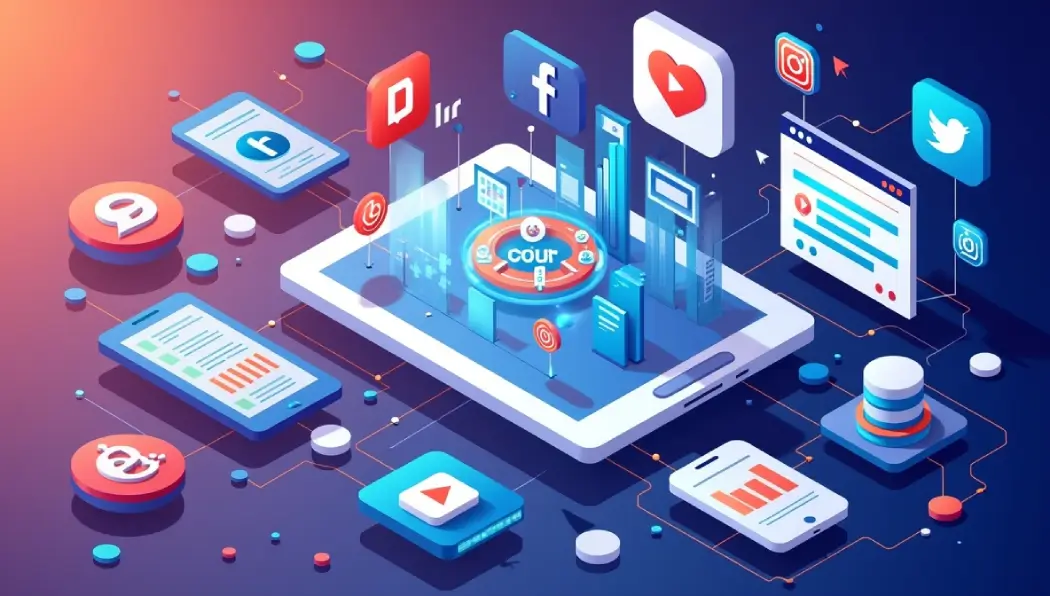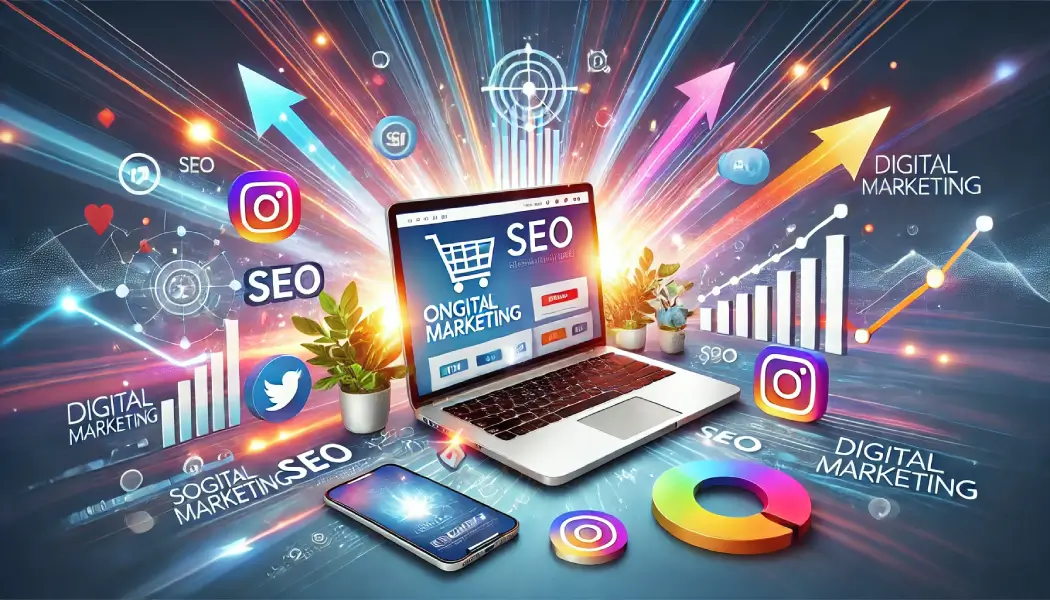In today’s competitive market, businesses of all sizes struggle to stand out and grow. Whether you’re a startup trying to make a name or an established brand looking to expand, the challenge remains the same: How do you craft a marketing strategy that drives real results? Without a clear, actionable plan, you may find yourself wasting resources on ineffective tactics, or worse—losing ground to your competitors.
But here’s the good news: it doesn’t have to be this way. By adopting the right marketing strategies, you can unlock new opportunities, build stronger connections with your audience, and scale your business more effectively.
In this article, we’ll explore 7 proven marketing strategies that will not only help you overcome these hurdles but position your brand for long-term growth. With actionable tips and real-world examples, you’ll walk away with a clear roadmap to enhance your marketing efforts and drive measurable success. Let’s dive in!
7 Effective Marketing Strategies

Looking to grow your brand and stand out in a competitive market? Discover 7 effective marketing strategies that can help you attract more customers, build lasting relationships, and boost your business growth. From content marketing to referral programs, these tips will give you the tools you need to take your marketing efforts to the next level. Keep reading to learn how!
Table of Contents
1. Content Marketing: Tell Your Brand’s Story
Think about your favorite brands. They probably have a story, right? Maybe they started in a small garage or were created to solve a big problem. That’s the power of content marketing—it helps you share your brand’s story in a way that connects with your audience.
Content marketing isn’t just about advertising your product. It’s about creating helpful, engaging, and valuable content that speaks to your audience. Whether it’s through blog posts, videos, podcasts, or social media, you’re telling your audience who you are and why they should care.
Start by identifying your audience’s pain points. What problems do they face that your brand can break? Create content around those problems. For example, if you’re a skincare brand, create blog posts or videos on How to Choose the Right Moisturizer for Your Skin Type. Content marketing builds trust and credibility. The more value you provide, the more likely people are to turn to your brand when they need something you offer. And when they trust you, they’re more likely to buy from you.
2. Search Engine Optimization (SEO): Drive Organic Traffic

Search Engine Optimization (SEO) is all about getting your website to show up in search engines like Google. Suppose about the last time you Googled something. You probably clicked on one of the first results, right? That’s the goal of SEO: to make sure your website is easy to find when people search for things related to your business.
To get started, focus on keywords—the words people are searching for when looking for products or services like yours. Use these keywords in your website’s content, titles, and meta descriptions to help search engines rank your site higher.
Use tools like Google Keyword Planner to find popular hunt terms. Let’s say you run an original coffee shop. Keywords like “best coffee in your city can help bring local traffic to your site.
SEO helps you get organic, free traffic to your website. Instead of paying for ads, you can attract people who are already searching for what you offer. The more traffic, the more chances you have to convert them into customers.
3. Email Marketing: Engage Your Audience Directly
Everyone checks their email. It’s one of the easiest ways to reach your audience. By sending content that’s helpful, personalized, and relevant to the person on the other side.
Email marketing Strategies let you speak directly to your customer. Whether you’re sending a special offer, a newsletter, or a product update, you can communicate with people who have already shown interest in your brand. This makes email a powerful tool to build relationships and drive sales.
Segment your email list. For example, if you sell clothes, you can create separate lists for men’s and women’s fashion. This way, you can send targeted emails that speak directly to each group’s interests.
Email marketing has one of the highest return-on-investment rates. By sending the right message to the right person, you’re more likely to get sales. Plus, it’s a great way to stay top of mind with your audience.
4. Social Media Marketing: Build a Strong Online Presence
Social media is a platform, where people spend a lot of their time. Whether it’s scrolling through Instagram, chatting on Facebook, or watching TikTok videos, it’s the perfect place to connect with your audience. Social media lets you build relationships, showcase your brand’s personality, and even sell your products.
To succeed on social media, consistency is key. Post regularly and mix up your content—photos, videos, stories, polls—whatever resonates with your audience. The goal is to be active and engaging, not just pushing your products. You want to start conversations and create a community.
Respond to comments and messages. Social media isn’t a one-way street. The more you are active with your followers, the more loyal they will become
Social media gives you the chance to show your brand’s human side. People want to follow brands that feel personal, not corporate. By being active and engaging, you build a loyal following that trusts your brand.
5. Influencer Marketing: Leverage Trust & Credibility
Imagine a friend telling you about a new restaurant, and because you trust their opinion, you decide to check it out. That’s the power of influencer marketing. Influencers are people with a large, engaged following, and when they recommend your brand, it feels more personal and trustworthy.
Influencer marketing allows you to tap into the influencer’s audience. Instead of advertising directly, you let influencers share their honest opinions about your brand. This creates more authenticity and can drive action from people who trust that influencer.
pick up influencers whose audience matches your target market. It’s not always about having the most followers; sometimes micro-influencers (those with smaller, niche followings) can be more effective because their audience is highly engaged.
Influencer marketing helps you reach new people who might not have heard about your brand otherwise. When an influencer speaks positively about your product, their followers are more likely to trust and purchase from you.
6. Paid Advertising: Speed Up Growth
Imagine you’re trying to grow your business, but you’re not getting the attention you want. Paid advertising can help you skip the wait and get your brand in front of more people, faster. With paid ads, whether on Google, Facebook, or Instagram, you can target specific audiences and show them exactly what you offer.
Paid ads allow you to reach potential customers who might not know about your brand. For example, if you’re running a local bakery, you can use Facebook ads to target people in your city who love baking or enjoy desserts. This ensures your message is going directly to people most likely to engage with it.
Start small and test your ads. Don’t put all your budget into one campaign. Run a few different ads, with different images or copy, and see which ones perform best. This way, you’ll know what works before investing more.
Paid advertising allows you to grow quickly and efficiently. While organic methods like SEO and content marketing take time, paid ads get you immediate visibility. Plus, you can track how well your ads are doing, so you can constantly improve your campaigns for better results.
7. Referral Marketing: Turn Customers into Brand Advocates
Word of mouth has always been a powerful marketing tool, and referral marketing Strategies take that to the next level. It turns your happy customers into advocates who actively spread the word about your brand. The best part? They do it because they get rewarded for it.
Referral programs are simple to set up. You offer your customers incentives, like discounts or free products, for referring their friends or family. When they feel they’re getting something valuable in return, they’re more likely to share your brand with their network.
Make it easy for customers to refer. Offer simple referral links they can share via email or social media. You could also track referrals through unique codes or links, so you know who’s sending new customers your way.
Referral marketing builds trust. People are more likely to buy from a brand their friends or family recommend. By encouraging referrals, you create a community of loyal customers who will actively promote your brand, helping you grow even faster.
Conclusion
Here’s the takeaway: Start by focusing on one or two strategies that align with your brand’s goals and resources. Whether it’s content marketing to build trust or paid ads to speed up growth, consistency is key. Don’t try to do everything at once. Test, measure, and refine your approach over time.
Next, dive deeper into these marketing strategies and tailor them to your brand’s unique needs. Experiment with SEO, create a compelling referral program, or explore influencer partnerships—there’s no one-size-fits-all solution. As you apply these marketing strategies, you’ll be well on your way to boosting your brand’s growth and achieving long-term success.
Now, it’s time to take action. Pick the strategy that resonates most with your brand and start implementing it today. Your growth journey begins now!



